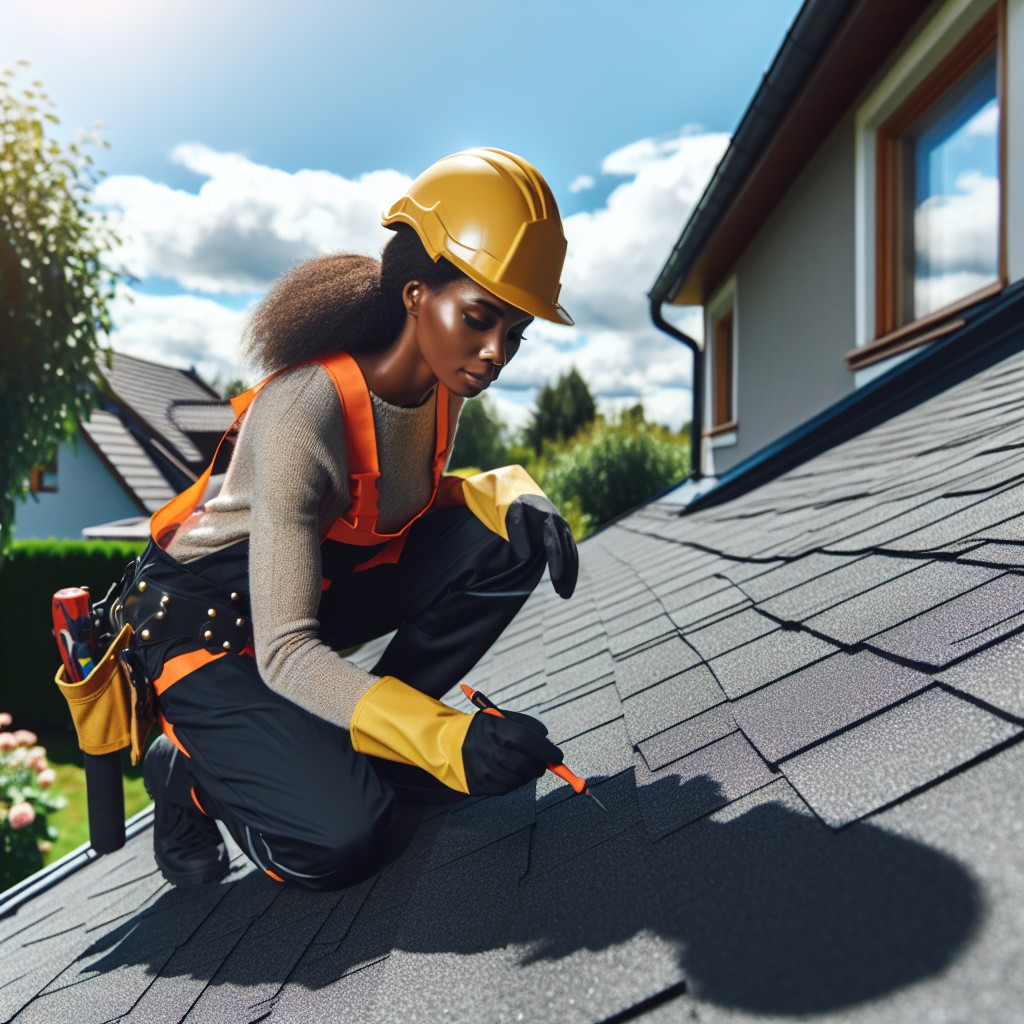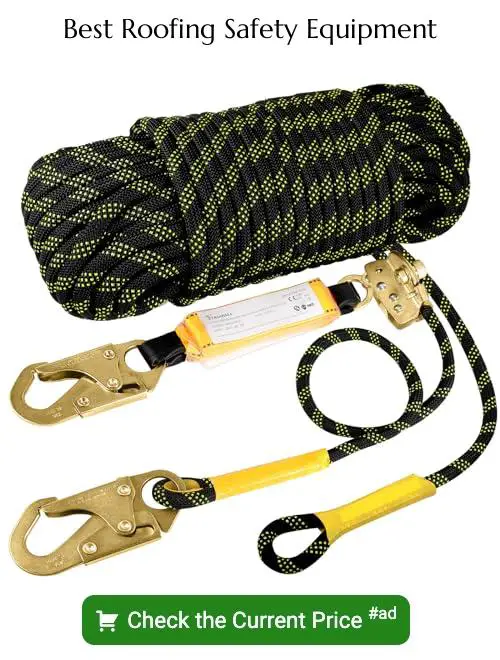Last updated on
Learn the essential safety measures and practical techniques for working effectively on a steep roof.
Key takeaways:
- Recognize hazards & risks of working on a steep roof.
- Wear appropriate safety gear: secure harness, rubber-soled shoes, safety helmet, padded gloves.
- Choose the right tools: non-slip feet ladder, scaffolding, fall protection systems.
- Set up a safe work zone: cones, caution tape, anchored ladders, temporary fencing.
- Stay alert, be prepared, and know emergency procedures.
Assessing the Risks: Understanding the Hazards of Working On a Steep Roof

The incline of a steep roof significantly increases the risk of slips and falls. It’s essential to recognize that these surfaces can be unpredictable, and different weather conditions can exacerbate the risk, rendering the roof slick.
Moreover, carrying tools and materials can unbalance even the most experienced workers. The height involved introduces the potential for serious injury or fatality in the event of a fall. Furthermore, steep roofs can also contribute to rapid fatigue due to the effort required to maneuver, which may impair judgment and physical capability.
Lastly, be aware that roof structures might have weak spots, unable to bear the worker’s weight, hence the importance of knowing the roof’s architecture and potential hazards before commencing any work.
Wear Appropriate Safety Gear: Tips for Choosing and Wearing Personal Protective Equipment
When selecting personal protective equipment (PPE), prioritize items designed for roofing tasks. A secure harness is a must-have, ensuring a safety line can be properly anchored. Opt for a harness that’s both snug and comfortable, as it will be worn for extended periods.
Footwear is equally important – go for shoes with rubber soles that provide strong grip on sloped surfaces. Avoid smooth-soled shoes which increase the risk of slipping.
Head protection cannot be overlooked, so choose a safety helmet that fits well and is adjustable. This isn’t just to protect from falls; it’s also crucial for preventing injury from falling debris or accidental bumps against roof fixtures.
Lastly, consider padded gloves to enhance grip and protect hands from abrasions. Weather conditions can also dictate additional gear, such as sunglasses for eye protection on sunny days or extra layers for warmth in colder climates. Always ensure equipment is in excellent condition and complies with the relevant safety standards.
Choose the Right Tools and Equipment: How to Select and Use the Best Ladders, Scaffolding, and Fall Protection Systems
Selecting the appropriate ladder is critical; an extension ladder with non-slip feet ensures stability when extended above the roof’s edge. For continuous work, scaffolding can provide a stable platform, but ensure it is secured and level. Additionally, a roof ladder may be necessary for maneuvering on the surface safely.
When it comes to fall protection, a personal fall arrest system (PFAS) is non-negotiable. This includes an anchor point, which must be installed according to the manufacturer’s guidelines and capable of supporting at least 5,000 pounds per worker, a full-body harness that distributes fall forces across the body, and a shock-absorbing lanyard or self-retracting lifeline to arrest a fall within inches.
Roofing brackets offer a secure foothold and staging area for materials, reducing the risk of slipping or dropping tools. Additionally, consider using toe boards or chicken ladders for extra safety on steep inclines.
Remember to inspect all tools and equipment before use for any wear, damage, or defects. Proper use and diligent maintenance of these tools not only facilitate the job at hand but are vital for safety compliance and overall efficiency on steep roofs.
Set Up a Safe Work Zone: Strategies for Establishing a Secure Area Around the Work Site
Before beginning work on a steep roof, demarcate the perimeter of your work area with cones and caution tape to alert passersby of potential hazards like falling tools or debris. Ensure that ladders are securely anchored at the base and where they contact the roof. Use ladder stabilizers or standoffs to provide additional safety and prevent damage to the guttering.
For jobs requiring several days or exposure to high traffic, consider installing temporary fencing to create a buffer zone. Keep equipment and materials organized within this zone to minimize trip hazards and streamline your workflow. Always have a spotter—someone who remains on the ground to monitor safety and assist with handling materials. Remember, vigilance in setting up a secure work environment will pay dividends in safety and efficiency on the job.
Stay Alert and Be Prepared: What to Do in Case of an Emergency or Accident
Vigilance is key when working on a steep roof. Keep a mobile phone within reach to call for help if necessary. Know the location of the nearest hospital and have an emergency contact aware of your work plans.
Regularly inspect your workspace for potential hazards, such as loose shingles or weakened structures, and address them promptly. In the event of an accident, maintain a calm demeanor and seek immediate assistance. Furthermore, ensure that your work crew is trained in basic first aid and emergency response procedures.
Remember, a well-prepared roofer is not only efficient but also prioritizes safety above all.





